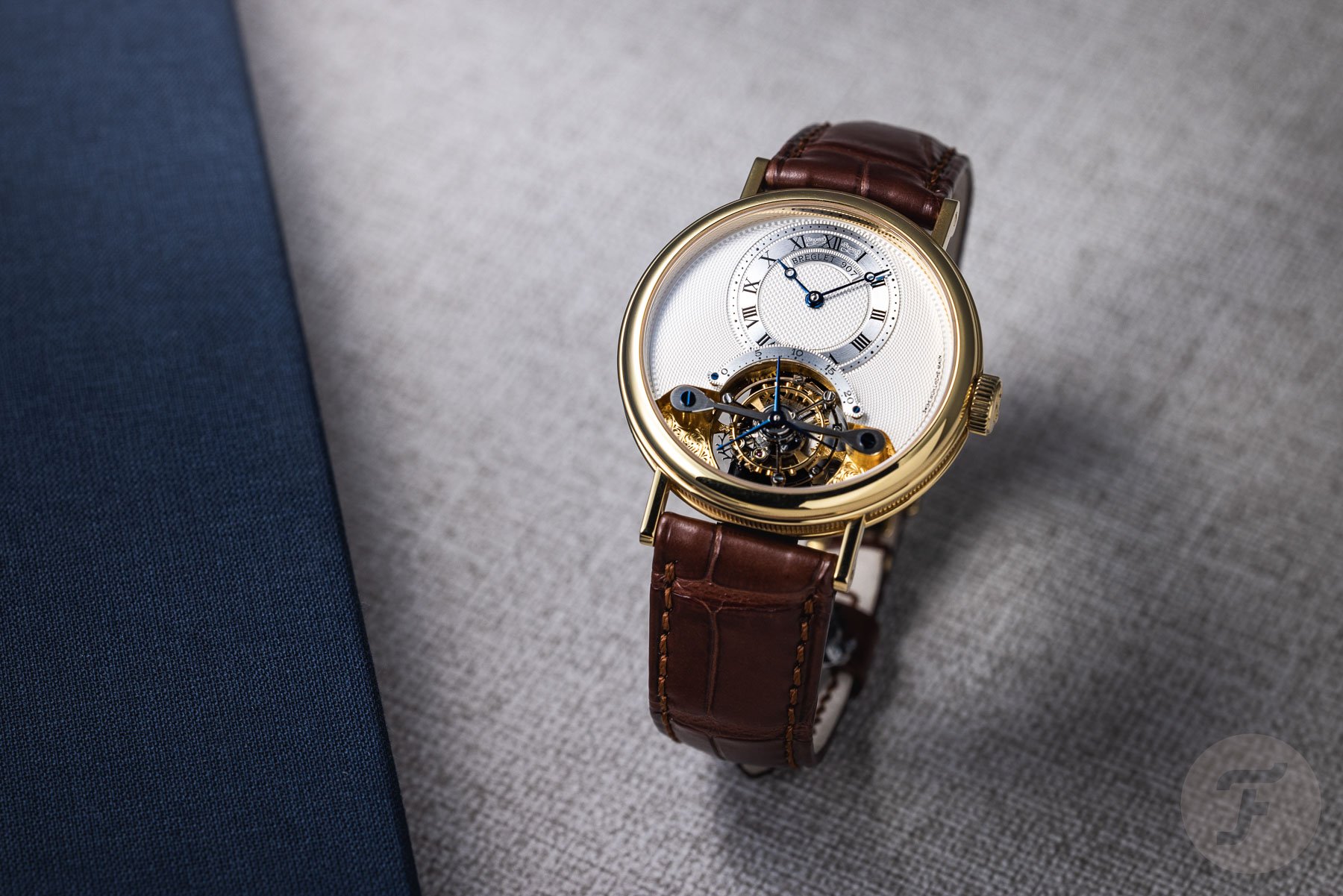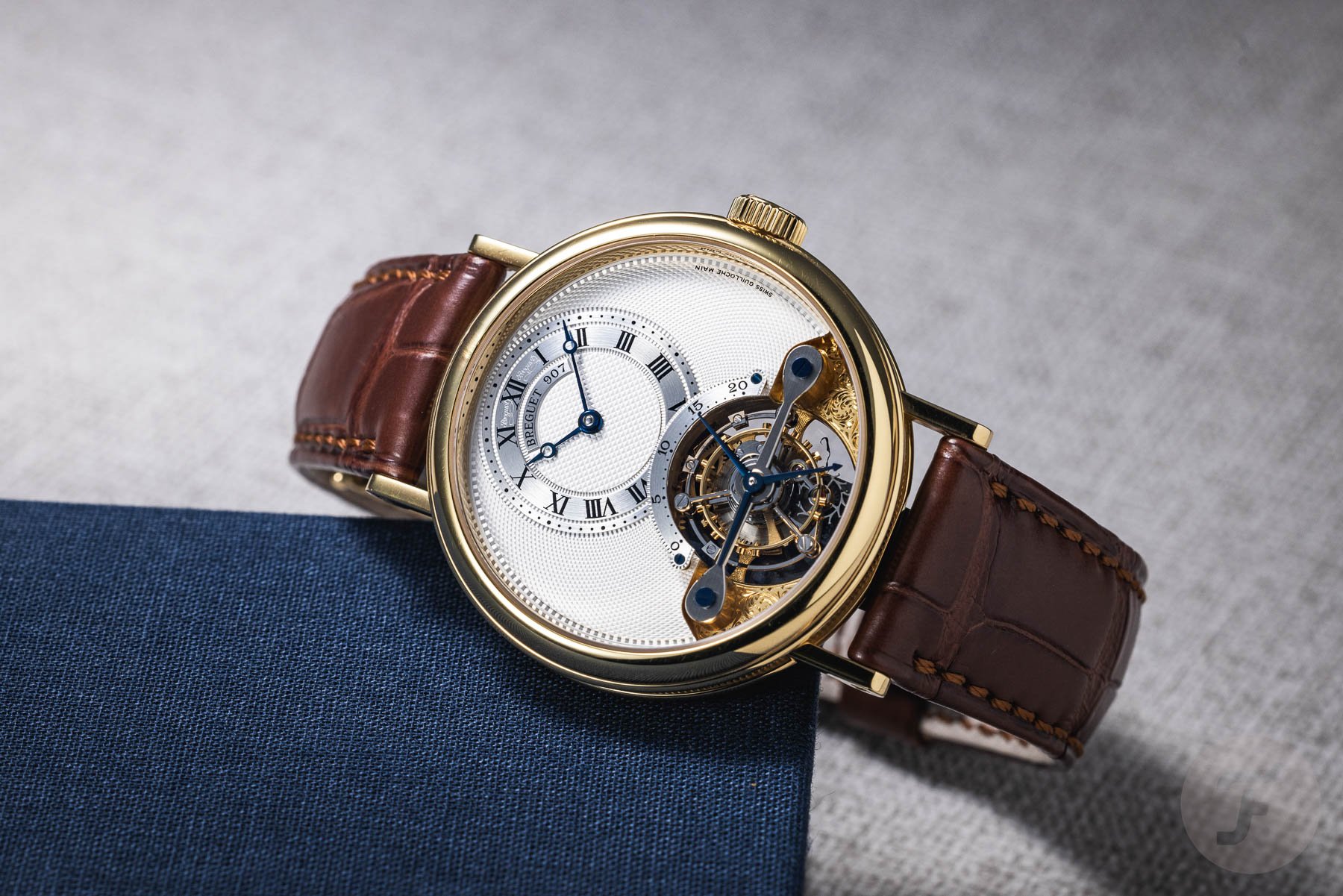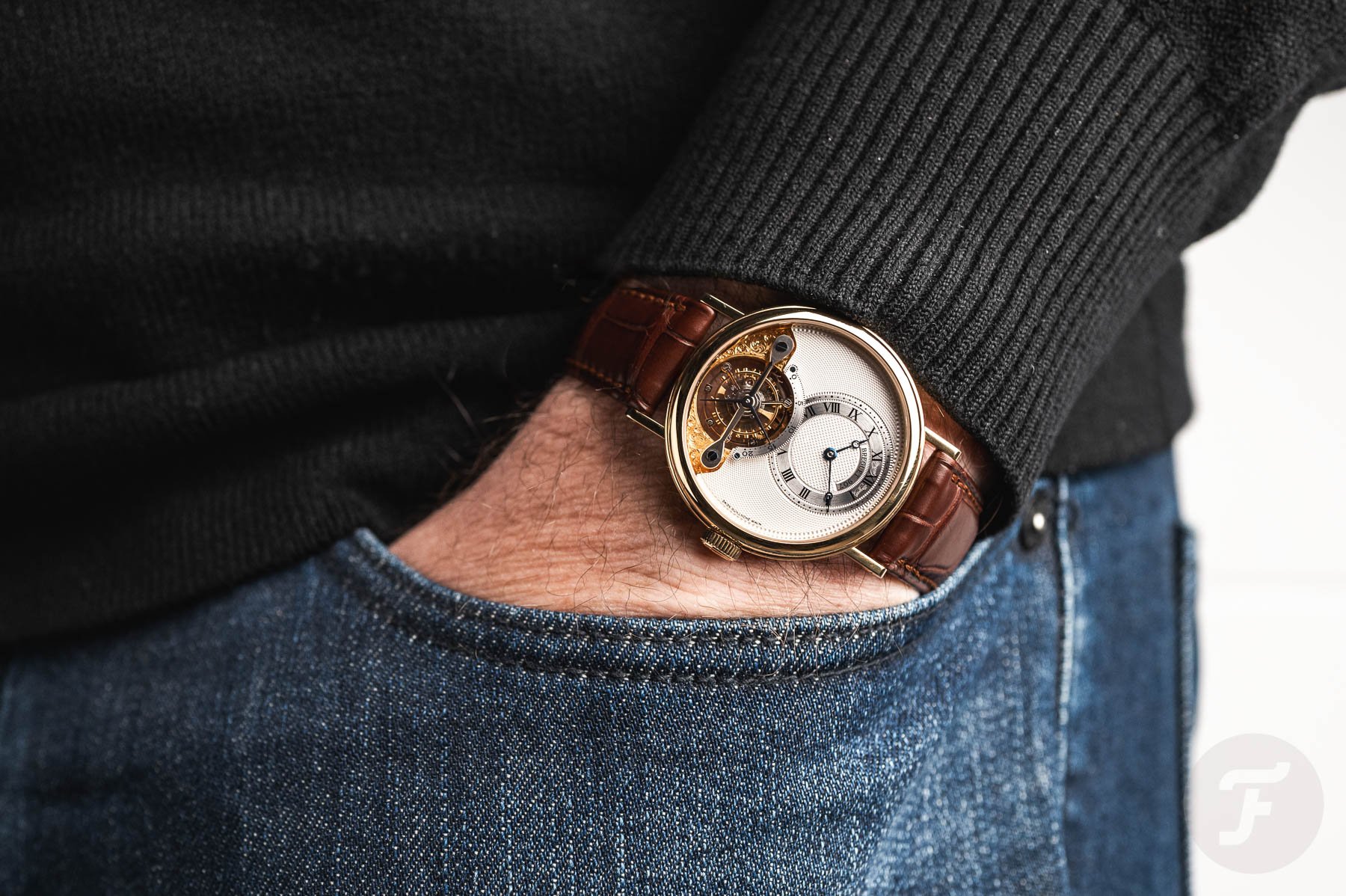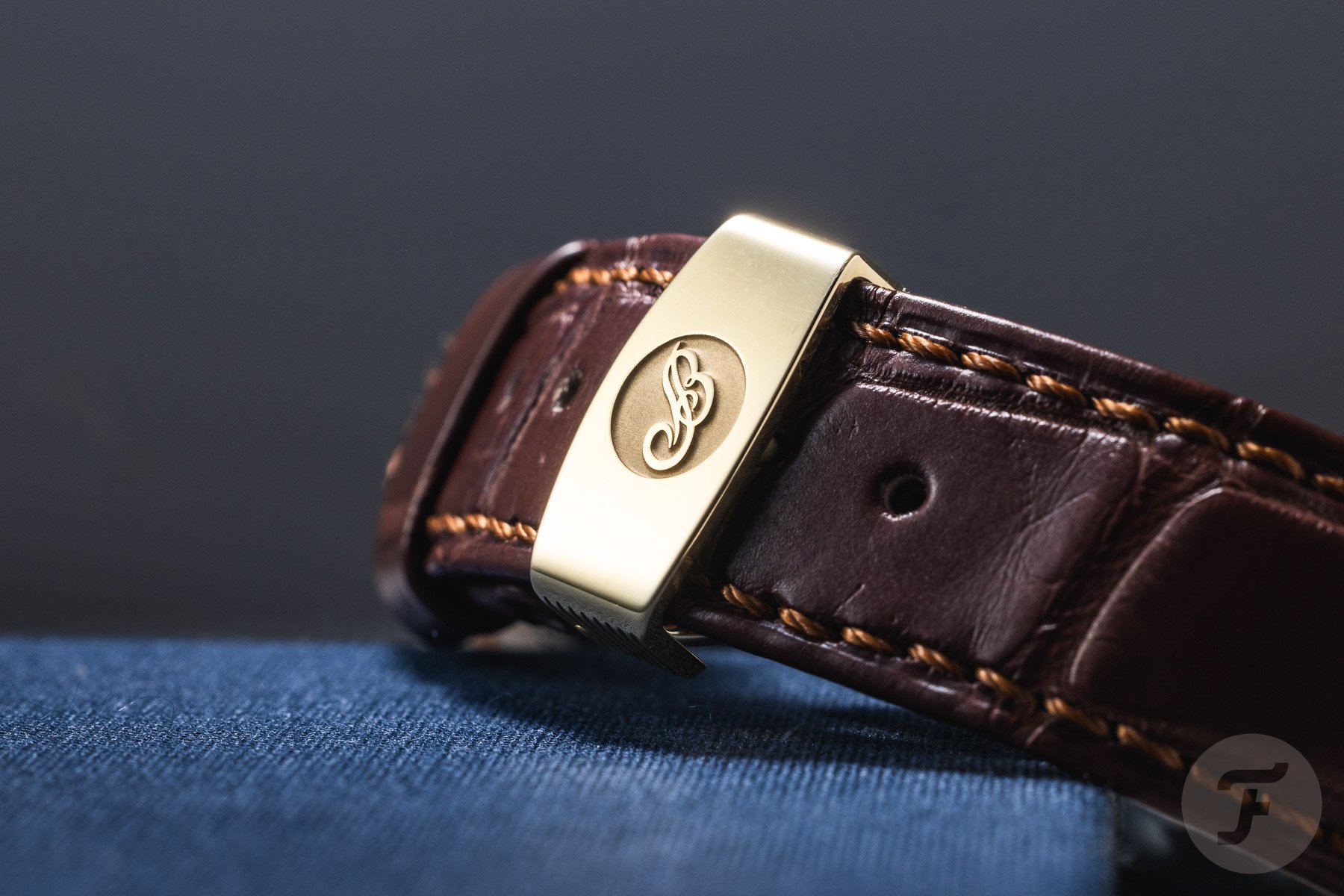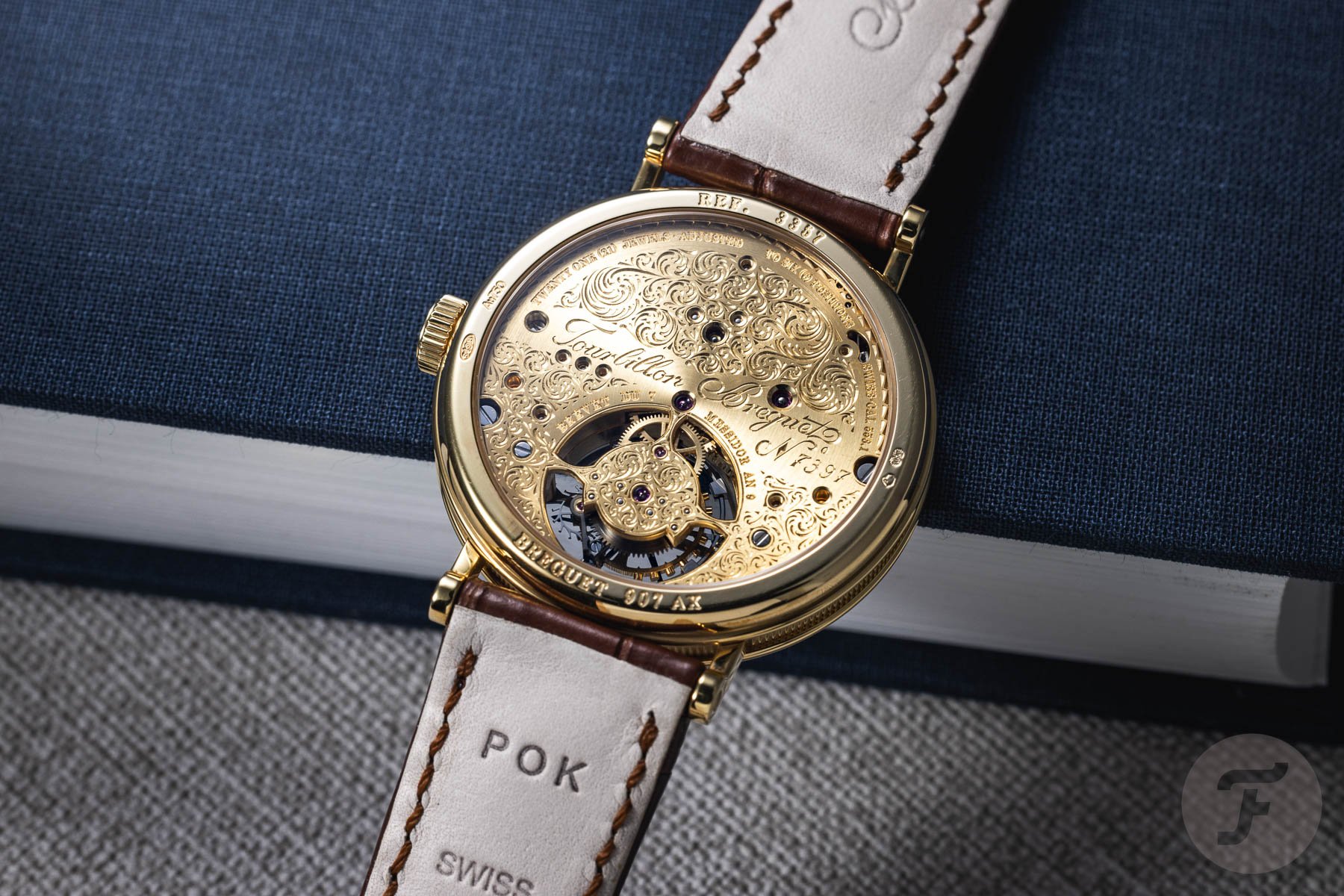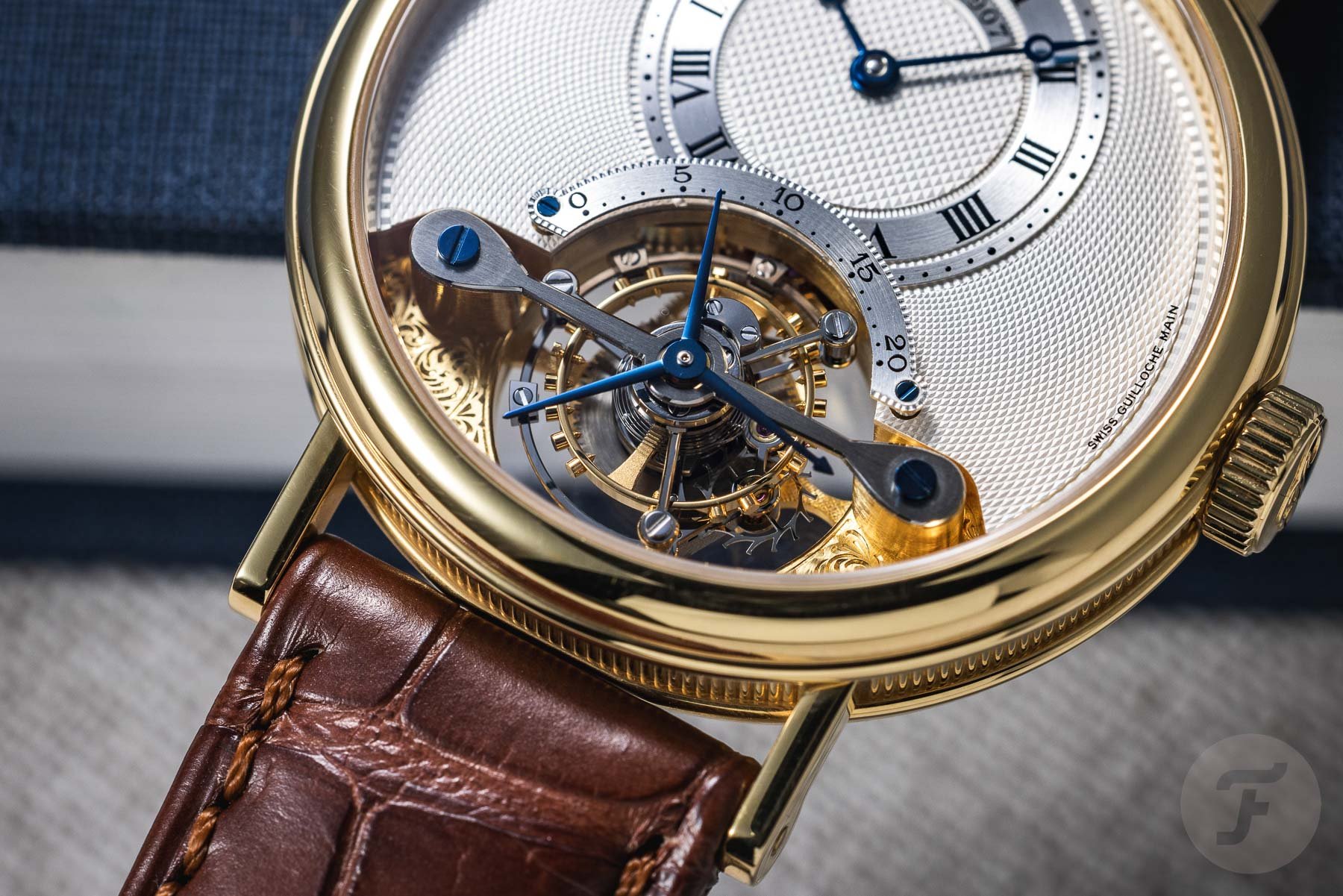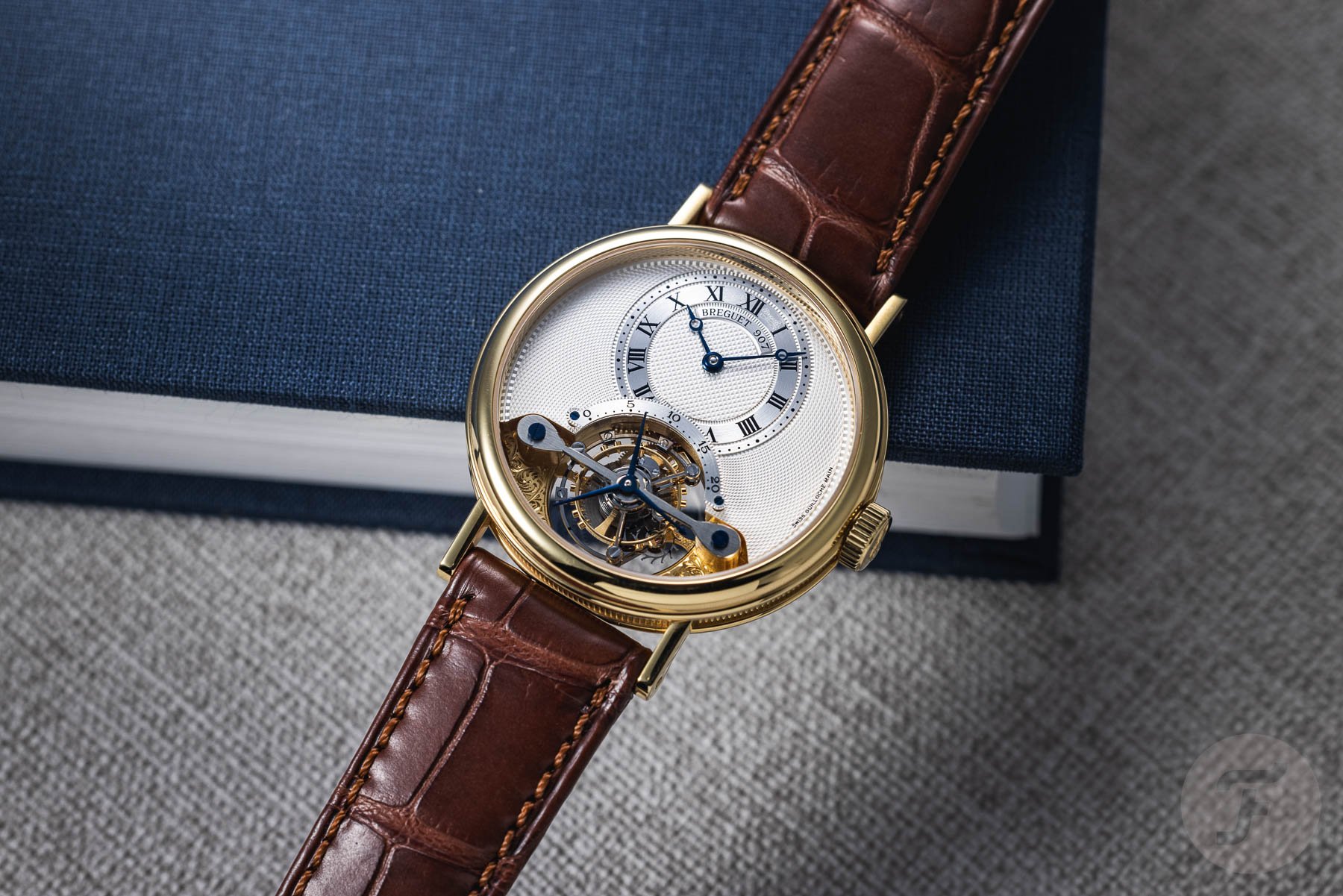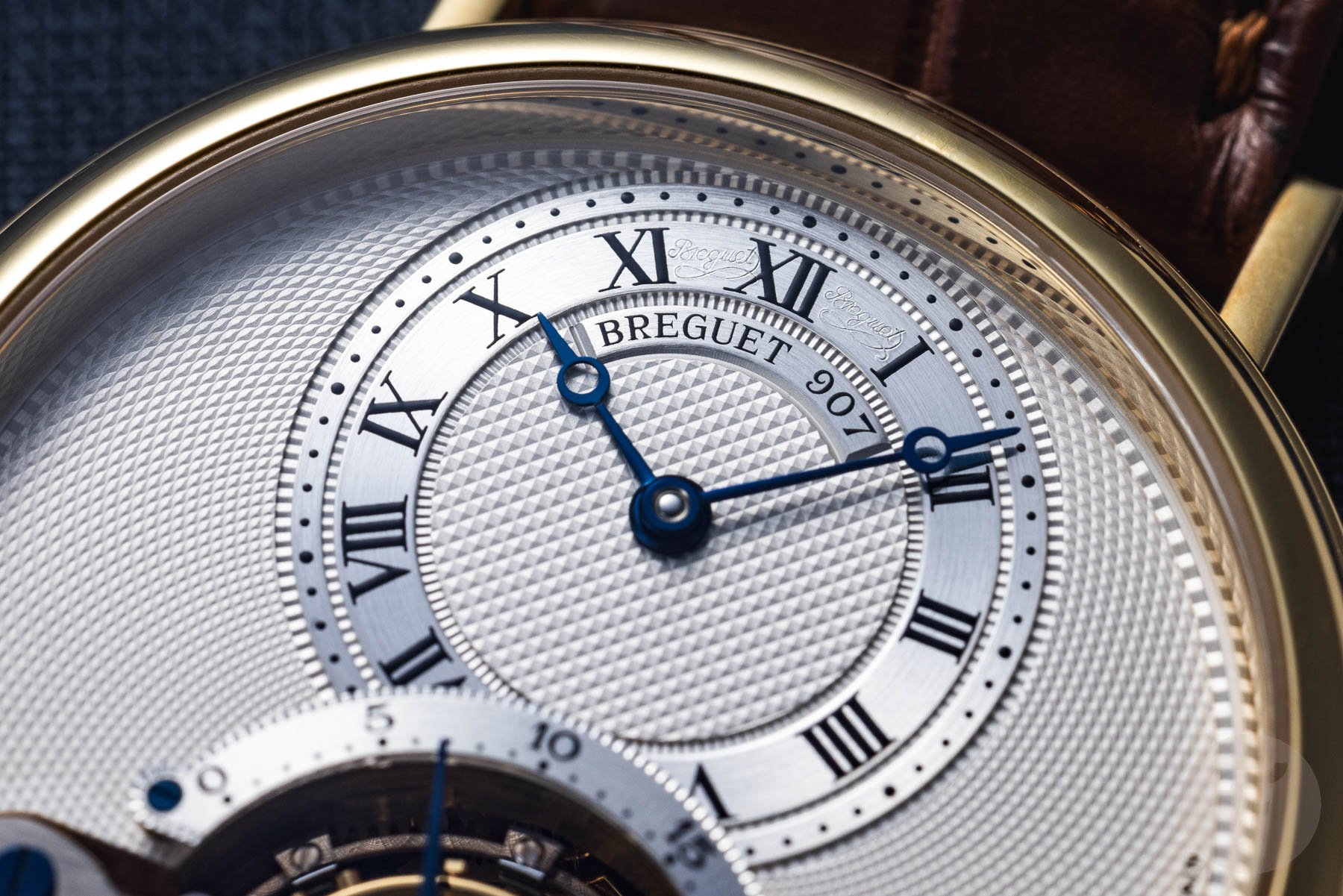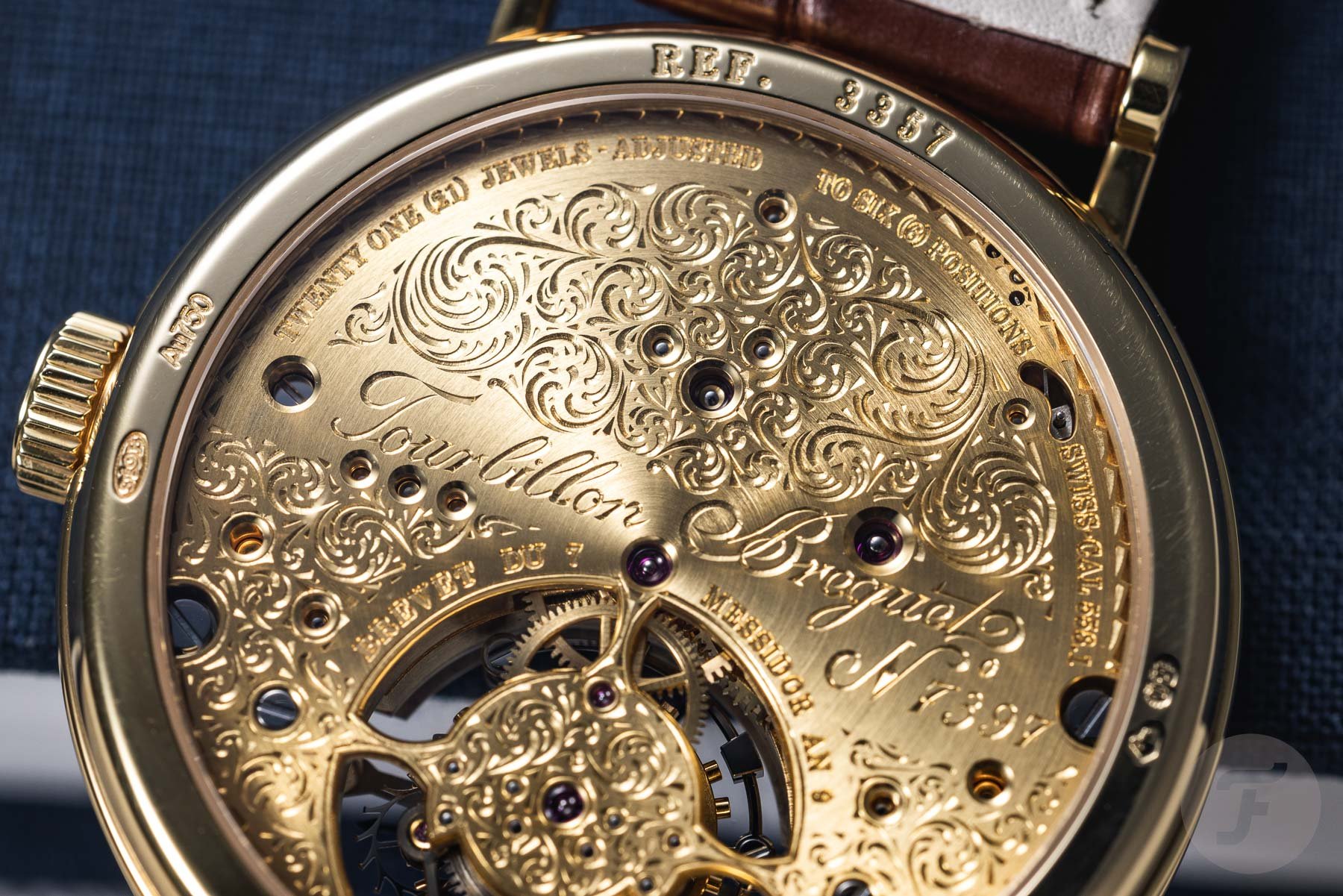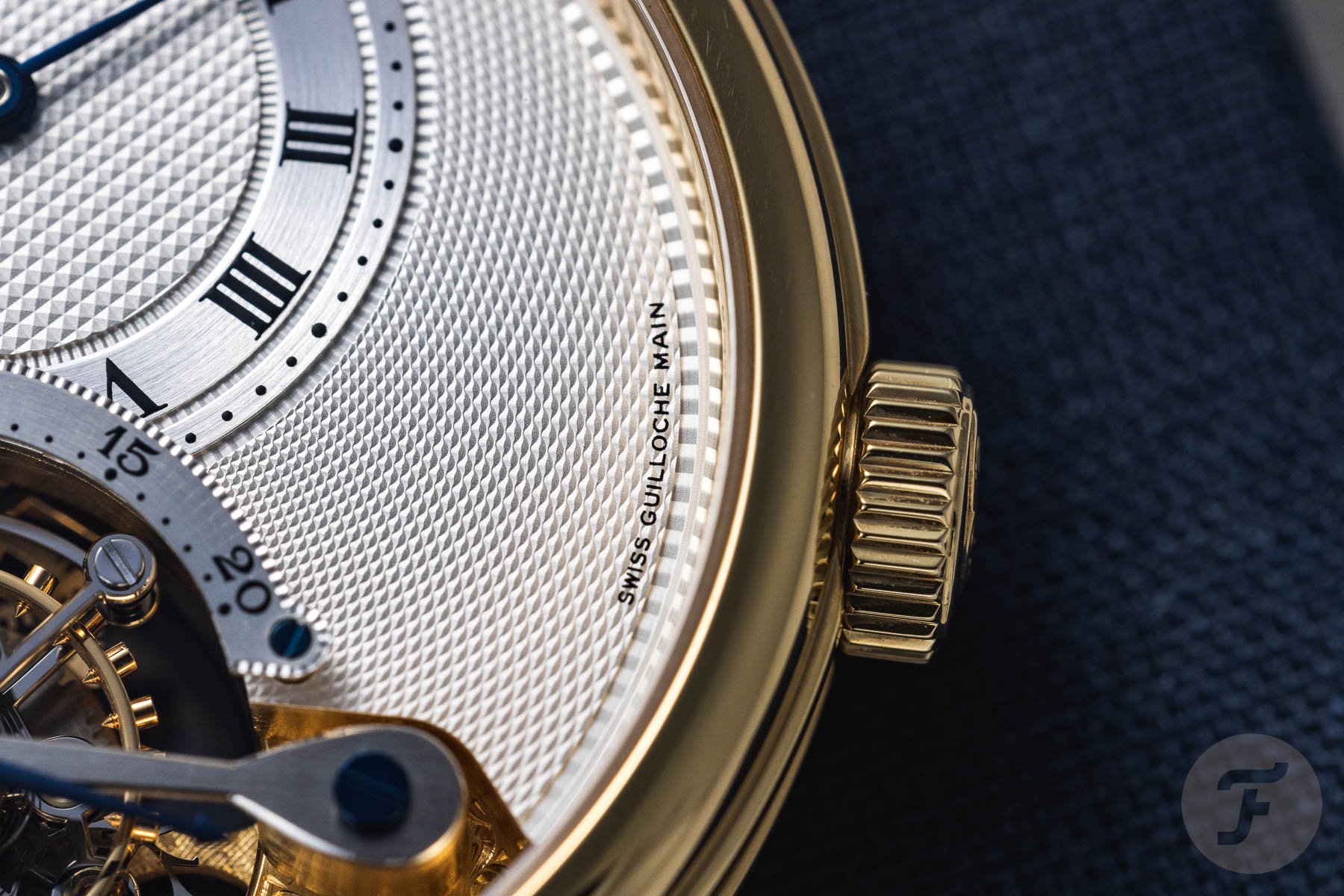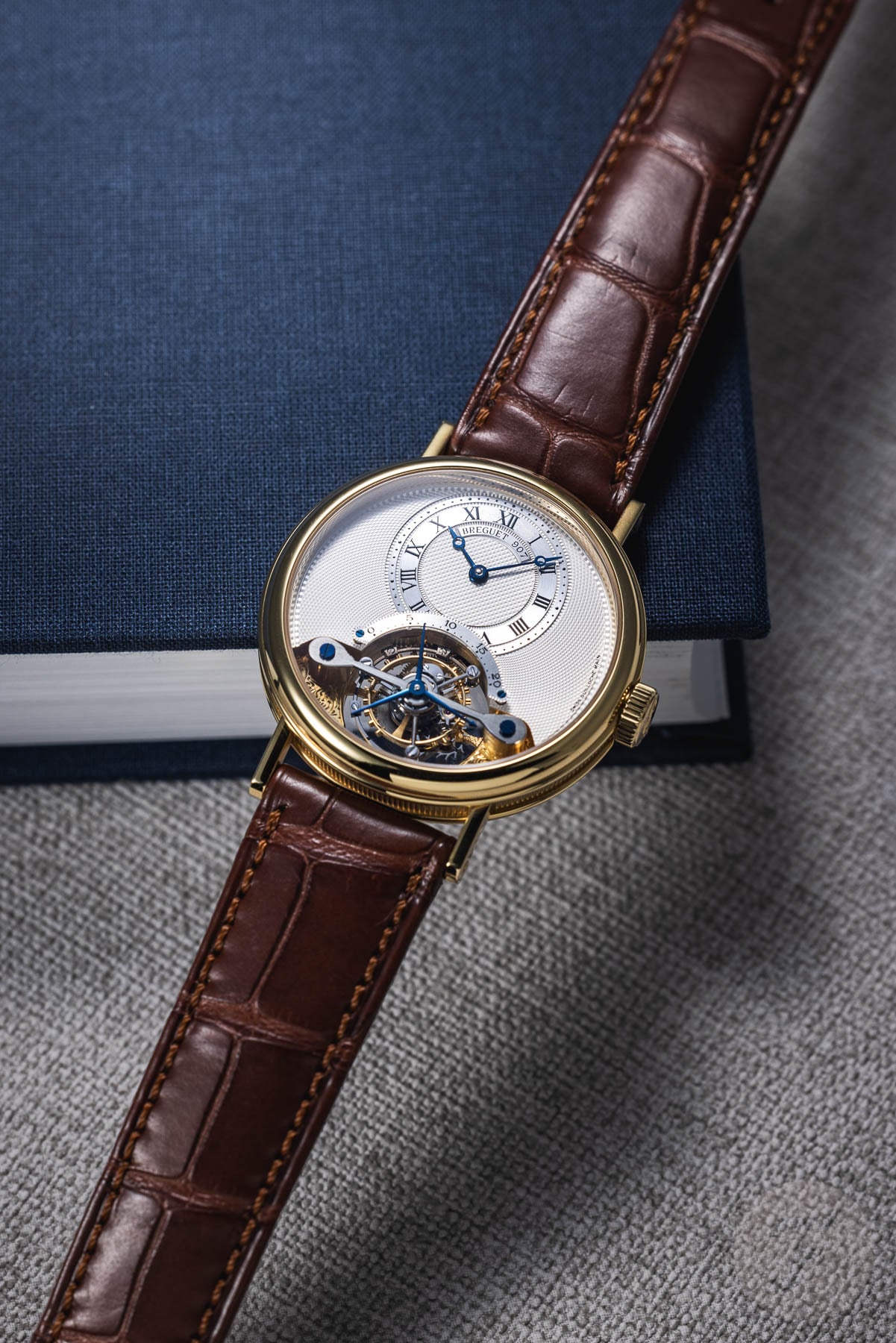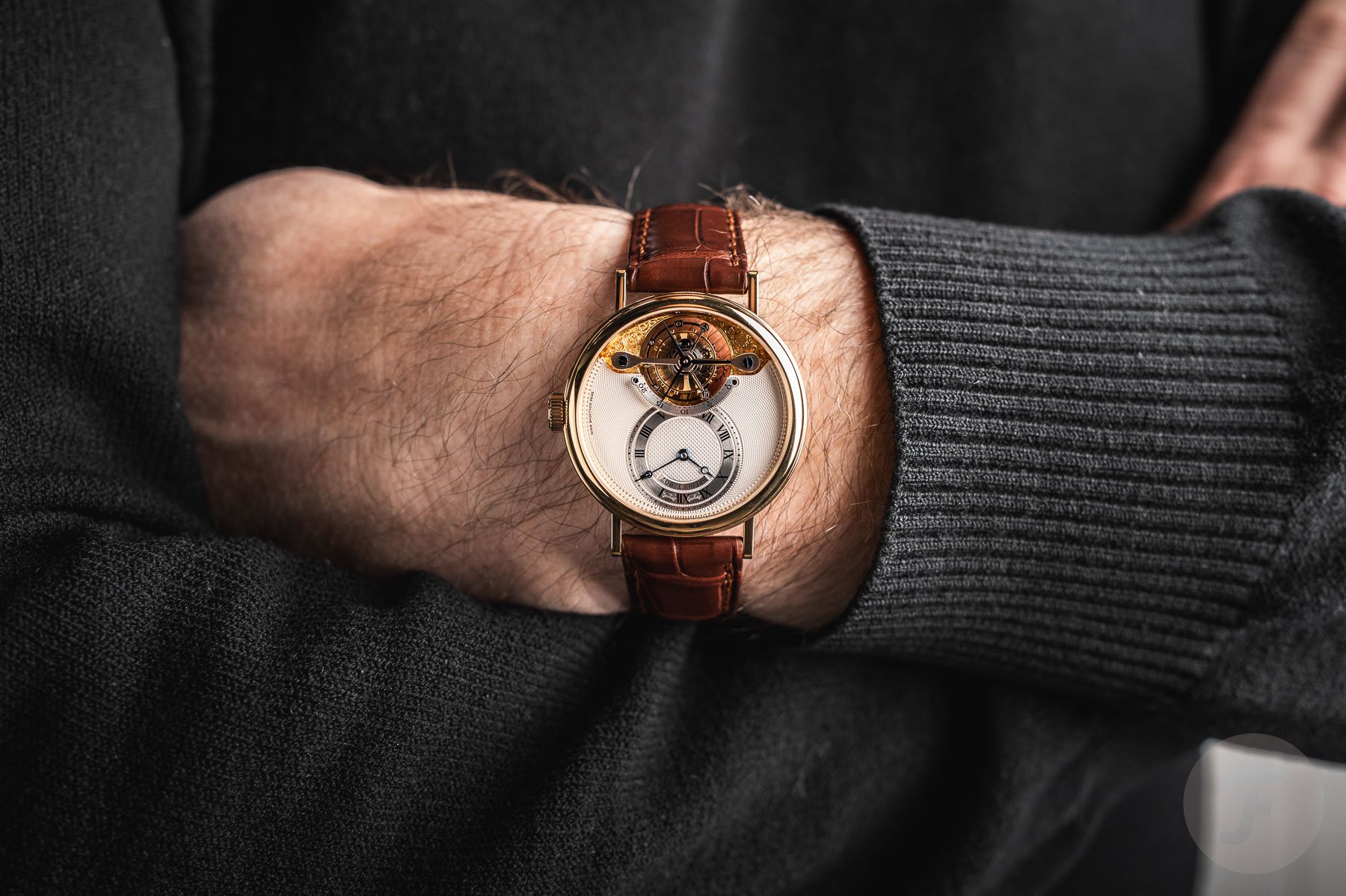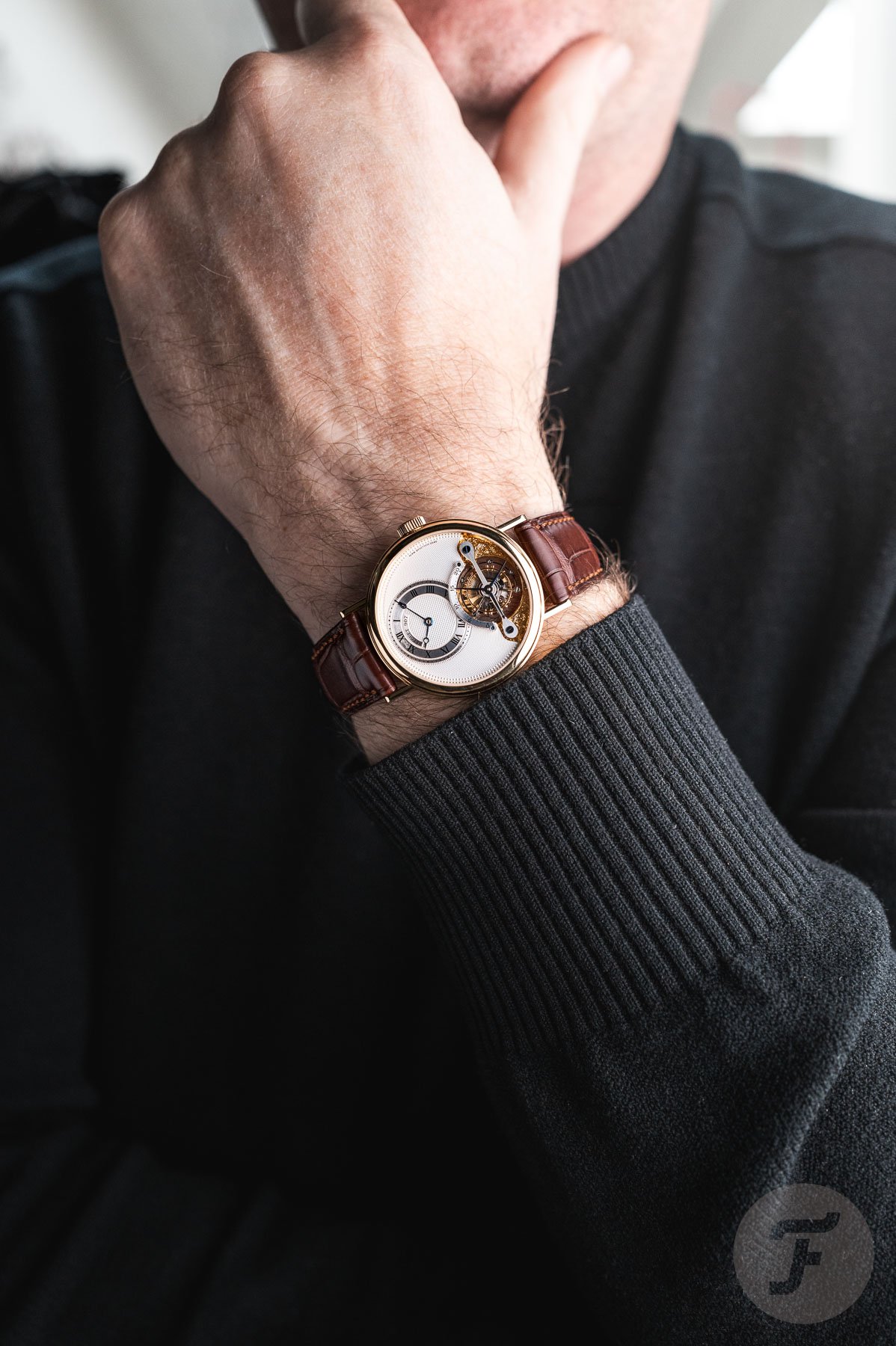Exploring Evergreens: The Breguet Classique Tourbillon 3357
Approximately 180 years after the first Breguet pocket watch with a tourbillon, Breguet decided to put its founder’s famous invention into a wristwatch. It wasn’t the first wristwatch with a tourbillon, though. Arguably, Omega created that back in 1947 to compete in the observatory trials. Then, in 1986, Audemars Piguet became the first to put a tourbillon caliber (and a self-winding one, at that) into wristwatches that clients could buy.
Breguet Classique ref. 3357
Eleven years before Swatch Group acquired Breguet in 1999, the brand introduced the tourbillon in the 35mm gold reference 3350. This watch was the brainchild of Daniel Roth, a watchmaker who came from Audemars Piguet in Le Brassus. A few years later (after 1995), Breguet introduced the reference 3357. It made small cosmetic changes to the original 3350, such as a slightly different dial color, “Swiss Guilloché Main” printed on the dial at 3 o’clock, a Breguet-signed crown, and a display case back. The 3357 uses the same Breguet caliber 558, with beautiful hand-engraved bridges on both sides.
This almost 30-year-old watch is still in the Breguet catalog today, so I requested it for this Exploring Evergreens article. The reference 3357, which belongs to Breguet’s Classique collection, is available in rose gold (BR), white gold (BB), and yellow gold (BA). I picked the one in yellow gold, the Classique Tourbillion ref. 3357BA.
I can’t think of another brand that has produced a watch for this long without any updates or changes. We can, therefore, say that the Breguet Classique ref. 3357 is a proper evergreen.
The Breguet 3357 is small but very wearable
Usually, a 35mm diameter is a bit small for my wrist, but this watch also has a nice 42mm lug-to-lug length. The yellow gold Breguet Classique case has the typical coin-edge decoration and measures 9.15mm thick. It’s a very compact watch, but it sits amazingly well on my 18cm wrist.
Brown alligator and a gold folding clasp
The Breguet 3357 comes on a brown alligator strap and an 18K yellow gold folding clasp bearing the Breguet “B.” This clasp has a pin that fits into the strap holes and is easy to adjust without tools. However, after buying my Breguet Tradition, the first thing I did was swap its similar brown alligator strap for something in a different color and leather. If I owned the Breguet Classique Tourbillon 3357, I’d definitely put something more colorful on there, like a green lizard strap or something in a lighter tone. As with most other Breguet watches, the brown alligator strap makes the watch look stale.
The Breguet 558T movement inside
The hand-wound caliber 558T powers the Classique Tourbillon 3557. It ticks at an 18,000vph frequency and has a power reserve of 50 hours. It consists of 196 parts, including 21 jewels. The movement is 4.8mm in thickness and measures 29.9mm in diameter. The tourbillon itself has three blued hands, each pointing to the corresponding arced scale for 20 seconds. And, as you can see, the finishing and manual engraving on this movement are phenomenal.
The Breguet Tourbillon
I had a tough time taking this Breguet Classique Tourbillon off my wrist. It feels sublime and is a joy to admire from every angle. The hand-guilloché dial and the manual engraving on the various movement parts are breathtaking. Now, honestly, I am not the biggest fan of a tourbillon mechanism. It doesn’t bring much functionality to a wristwatch, which is why I don’t consider it a complication. Not everything needs to be functional, of course, but I also often don’t like how the tourbillon mechanism is displayed in a watch, let alone watches with two tourbillons or more.
But this Breguet Classique 3357 shows the tourbillon mechanism very prominently on the dial, and it made me revise my opinion on tourbillon watches. Breguet has bragging rights for a tourbillon, of course, but the brand also ensures that the finishing and decoration of all the parts in the tourbillon mechanism are done with the utmost attention and an eye for detail. To me, only then does a tourbillon mechanism make sense. I never had a fascination for tourbillon watches that are (relatively) affordable but suffer from poor finishing.
A hand-guilloché dial
The Breguet 3357, like most other references, breathes craftsmanship. Having been to the Breguet manufacture several times, I’ve seen the dial-making, movement development, and production, and it never failed to amaze me. In particular, the dial-making is incredibly interesting to witness. Breguet has almost two dozen guillocheurs who use traditional rose-engine lathes to make dials. They bring the complex designs that have been in the collection for many years as well as the recently developed ones to life. The hand-guilloché dial of the 3357 is made of solid gold and received a silver treatment. Blued Breguet hands indicate the hours and minutes on the small display at 12 o’clock
Movement decoration
The creation of dials can speak to any watch enthusiast’s imagination, but the same effort and painstaking work go into the movement’s finishing and decoration. It takes years for engravers to hone their skills, and they also use different techniques. A distinction is made between engraving (gravure) and ciselage. The latter requires a small hammer to push the carving tool forward. With the gravure technique, however, this is done by hand.
Breguet deserves more exposure
I always left the brand’s facility thinking, “I need a Breguet.” Breguet is on par with some of the other well-known respected Haute Horlogerie brands with double names, but it seems to stay below the radar of a broad audience. When I showed a Breguet watch to my father, for example, he told me that he had never heard of the brand before — for watches, at least (he was fully aware of the airplanes that Abraham-Louis Breguet’s great-great-grandson Louis Charles Breguet designed). That said, I believe that Breguet deserves more exposure and credit for its watches, like this 3357 or some other Classique and Tradition models.
Prices for an evergreen
The retail price of the Breguet Classique Tourbillon 3357BA today is €114,600. The rose gold version is slightly more expensive at €115,900, and the white gold one is the costliest at €116,400. Prices on the pre-owned market vary greatly but indicate that Breguet is, while very well-known among watch connoisseurs, still remarkably underappreciated and undervalued. Currently, pre-owned 3357s start at €35,500, which seems impossible. But when looking at a 1999 watch catalog, I noticed that the retail price back then was 110,000 German marks, which was about €55,000 at the time of the conversion in 2000. This means that if the offered pre-owned watches are older, they were probably purchased for retail prices closer to the mentioned one. So you might be buying a watch that is 25 years old or older but identical to today’s reference.
Owning a Breguet evergreen
However, owning a Breguet like this also comes at a price when talking about the total cost of ownership. According to the 2023 service pricing from Breguet, a complete service on a tourbillon watch will set you back €3,270. A factory polish for the gold case costs €360 on top of the service. This is a recurring event (the complete service, hopefully, not the polishing), regardless of whether the watch is a new or pre-owned purchase. However, for less than €4,000, you can restore your pre-owned Breguet Classique Tourbillon 3557 to new and fresh condition.
Many Breguet references should resonate with enthusiasts today who crave smaller diameters and thinner watches. The 3357 might not be for every watch lover’s wallet, new or pre-owned, but Breguet has many Classique references that might be for you. On the pre-owned market, you will also find a lot of smaller-sized and discontinued Classique models.
Wearing the Breguet Classique Tourbillon 3357 was great fun, and it gave me the same feeling I had when I left the Breguet manufacture in 2019. Meanwhile, I bought a Breguet Tradition in 2023, but now I “need” a Classique.

